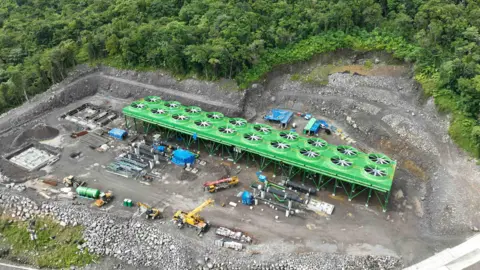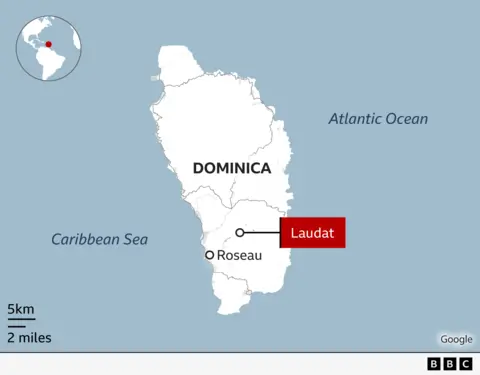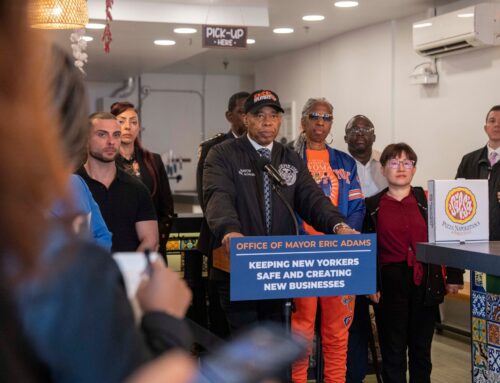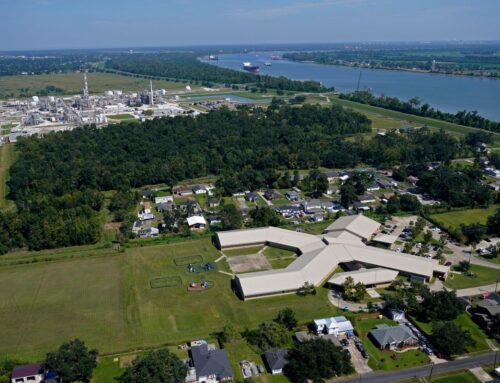How Dominica’s volcanoes will boost its green energy
May 14, 2025
Letting off steam: How Dominica’s volcanoes will boost its green energy
 Ormat
OrmatWith rainforests, waterfalls, volcanoes and hot springs, the Caribbean island of Dominica’s dramatic landscape is a haven for adventure-seeking ecotourists.
It attracted 83,966 visitors last year, a 13% rise from 2023, and led by new direct flights from the US, and the opening of more hotels.
Nicknamed the “Nature Island”, and now recovered from the extensive damage caused by 2017’s Hurricane Maria, Dominica’s government is set to harness its natural resources to generate clean electricity for its 66,000 residents and tourism sector.
To end the country’s long reliance on generators fuelled by imported diesel, a geothermal power station is being built in the south of the country. It will access the boiling hot water contained in natural underground reservoirs that are heated by the surrounding volcanic rock.
The 10-megawatt plant, under construction near the village of Laudat in the lush Roseau Valley, is on track to become operational by the end of the year.
Steam will be drawn up to the surface to drive turbines that will generate electricity. The used steam will then be cooled to the point where it becomes water again, and reinjected back underground for the process to restart.
“We hope to totally eliminate the need for diesel generation for electricity in Dominica by 2030,” Dominica’s energy minister Dr Vince Henderson tells the BBC. The government also says that the geothermal plant will reduce electricity bills.
And it is not just Dominica (not to be confused with the similarly named Dominican Republic), that is set to benefit. Long-term plans include exporting surplus electricity via undersea cables to neighbouring islands.
Dr Henderson adds that he hopes the success of the geothermal plant will inspire other Caribbean nations to explore more renewable energy sources.
Dominica’s geothermal plant will be just the second in the Caribbean. Guadeloupe, an overseas department of France, has had a 15-megawatt station in operation for three decades.
The Roseau Valley facility is being created through a public-private partnership between the Dominican government and US-Israeli renewable energy company Ormat Technologies.
It is costing tens of millions of US dollars, partially funded by grants and investments from several governments, including the US, UK, Japan and New Zealand. Additional funding has come from various non-governmental organizations from around the world, and loans from the World Bank and the Caribbean Development Bank (CDB).
The Dominican government has also ploughed significant resources into the project, which required high upfront costs and a complex exploration process including drilling deep underground to test temperatures.
 Ormat
Ormat“Finding the resource is the first challenge. Then you need someone like us to build the facility,” says Ormat’s chief executive Doron Blachar. “Ormat is doing the entire project, from making the plant’s elements, shipping them to Dominica, mainly from Israel, and then constructing the power plant.”
Ormat has been designing and building renewable energy systems for more than five decades, and owns and operates geothermal plants in various countries from the Americas to Africa.
“Geothermal is a great, zero-emission electricity that doesn’t depend on wind or sun, and operates 24/7,” Mr Blachar explains. “It brings jobs to a country, both during construction and, more importantly, during the plant’s operations, along with new technology and expertise.”

Yet despite geothermal’s green credentials, Dominica’s new plant has raised concerns among some local residents, including environmentalist Atherton Martin who fears for the effects on the ecologically valuable Roseau Valley.
“There is no other area like it in the Caribbean,” he says, adding that the removal of vegetation during the exploration process “decimated wildlife” including endemic frogs.
Other residents told the BBC of some controversy over the amount of money the project was costing. It has certainly been several years in the making with the Dominican government alone said to have invested around $15m (£11.3m).
Dr Henderson admits that the project is “not easy” for a country that “faced a big challenge” when it had to substantially repair its electricity network after 2017’s Hurricane Maria. But he insists “it will be worth it in the end”.
Another common fear about geothermal plants is the potential for triggering earthquakes.
Ormat says it has never had a such an incident in its many years of operations.
 Gemma Handy
Gemma HandyMr Blachar believes the Caribbean could become “a hub” for geothermal technology.
Ormat acquired Guadeloupe’s plant from the French government in 2017 and is currently expanding it to boost its capacity to 25 megawatts.
With support from the CDB and driven by the Organisation of Eastern Caribbean States (OECS) Commission, work is also under way to explore and develop geothermal potential in fellow volcanic island nations Grenada, St Lucia, St Kitts and Nevis, and St Vincent and the Grenadines.
Ormat will operate the Dominica plant for 20 years before handing it over to state electricity provider Domlec. Mr Blachar estimates it will employ around 30 local people when it comes on stream later this year.
It should initially generate enough power to meet half of Dominica’s peak electricity demand, says Fred John, managing director of the government-owned Dominica Geothermal Development Company, which is also involved in the scheme.
Authorities are confident the plant will then soon support the entire country, and have enough spare electricity for some to be exported to neighbouring islands.
Mr John says that the facility will “serve as a test case for an attractive alternative” to fossil fuels. “The rest of the OECS will benefit from the lessons learned here – both what worked and what didn’t,” he adds.
The OECS recently set a target to reach 30% renewable energy within 10 years, with some countries, including Dominica and St Kitts, aiming for 100% by then.
OECS Director General Dr Didacus Jules describes Dominica’s geothermal project as a “bold and visionary step”.
“As a region heavily dependent on imported fossil fuels, the transition to green energy is not optional – it is existential,” he tells the BBC.
“This development also breathes new life into the long-held vision of a regional energy grid – one that connects our islands through clean, reliable, and affordable energy.”
Search
RECENT PRESS RELEASES
Related Post




